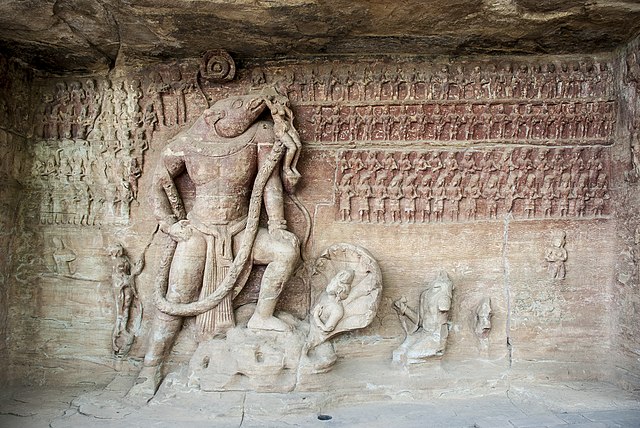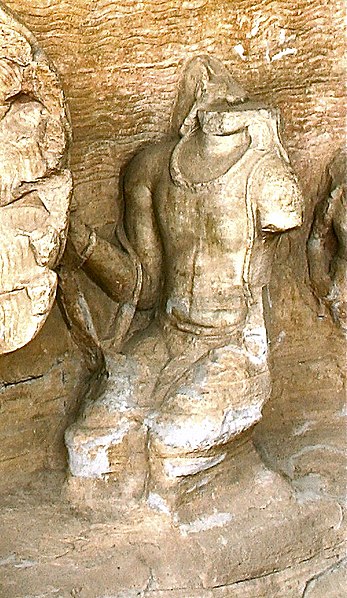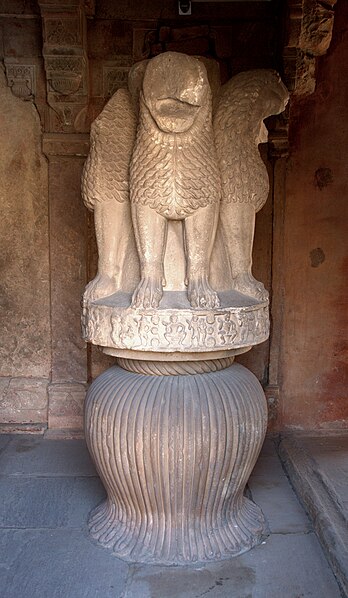The Udayagiri Caves are twenty rock-cut caves near Vidisha, Madhya Pradesh primarily denoted to the Hindu gods Vishnu and Shiva from the early years of the 3rd century CE to 5th century CE. They contain some of the oldest surviving Hindu temples and iconography in India. They are the only site that can be verifiably associated with a Gupta period monarch from its inscriptions. One of India's most important archaeological sites, the Udayagiri hills and its caves are protected monuments managed by the Archaeological Survey of India.
Udayagiri, Cave 5, Viṣṇu as the Varāha Avatar, general view
The Udayagiri Lion Capital, found near Udayagiri Caves, was first reported by Alexander Cunningham and is now in Gwalior. It is dated to closing decades of 2nd-century BCE, or is possibly a Gupta-period rework of a Mauryan capital.
Probable image of Chandragupta II, paying homage to Varaha, avatar of Vishnu, in Udayagiri Caves (Cave 5), circa 400 CE.
Another lion capital from Udayagiri, on the model of the Pillars of Ashoka. Gupta period. Gwalior Fort Archaeological Museum.
Vidisha is a city in central Madhya Pradesh, India. It is located 62.5 km northeast of the state capital, Bhopal. The name "Vidisha" is derived from the nearby river "Bais", mentioned in the Puranas.
Heliodorus pillar
Archaeological layers at Besnagar: the Temple of Vāsudeva in the forefront, and the Heliodorus pillar in the back
Besnagar pottery Period V
Besnagar silver punch-marked coins.








